|
Jamie Goode and Treve
Ring explore Sekt, Germany's sparkling wine
Part 3, Reichsrat von Buhl
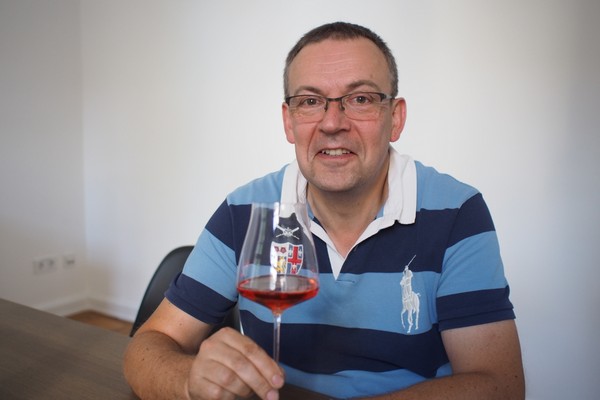
One of
the biggest boosts to quality Sekt production in Germany was the
arrival at Reischrat von Buhl of ex Bollinger chef de caves, Mathieu
Kauffmann (pictured above), in time
for the 2013 vintage.
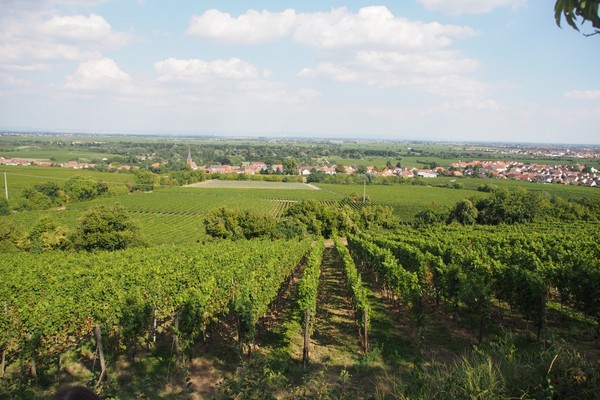
This
was once one of the world’s great wine estates, but over the years,
bits of the estate were sold off, and it ended up at its current
size of just over 50 hectares of vineyards. However, its vineyard
holdings, albeit reduced, are quite amazing, with many grand cru and
premier cru sites across Deidesheim, Forst and Ruppertsberg,
including Kirchenstück, Pechstein, Jesuitengarten, Freundstück,
Leinhöhle, Herrgottsacker, Kiesleberg and Paradiesgarten.
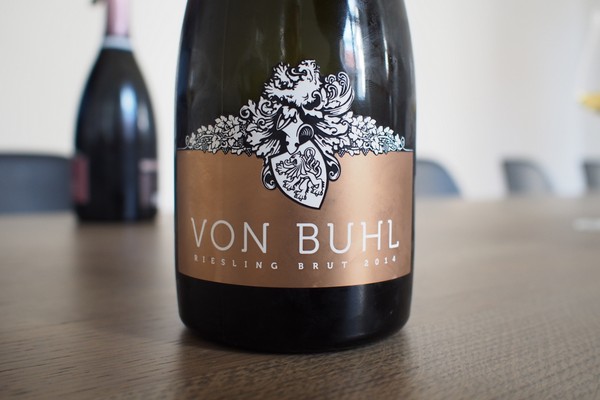
In
2005 the winery was bought by Achim Niederberger, but at the time it
was still under lease to Japanese businessman Toyohiro Tokuoka, with
the lease expiring in 2013. So Achim had eight years to build his
team, and in 2013 managing director Richard Grosche and winemaker
Mathieu Kauffmann (who previously completed a 12-year stint in
charge of Bollinger, after working on sparkling wines in Alsace)
took over. Grosche had convinced Achim (who sadly died in 2013) that
von Buhl was a sleeping giant, with its astonishing vineyard
holdings. Our tasting of Rieslings showed that the new regime is
nailing it: these are truly brilliant wines.
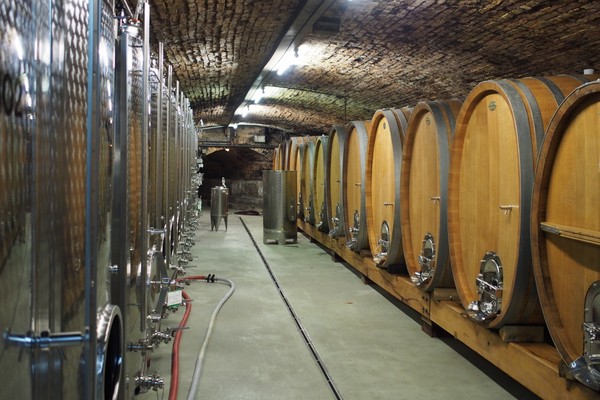
The
vineyards are now being managed biodynamically, and the cellar is
new, and impressive. Mathieu has had to start again, buying new
large oak (2400 litre dopplestücks, which differ markedly by
manufacturer, he says) each year to repopulate the stunning
underground facility so that he can make the wines he likes. He
favours large oak, minimal use of sulfur dioxide during vinification,
long lees ageing and minimal movement of the wine.
How
has the transition been for Mathieu? ‘Well, I’m originally from
Alsace, so it is quite easy for me to speak German. Alsatian dialect
is my mother language so it is quite easy to understand and speak
German, and my wife is a German teacher, so it was easy for me and
my wife, but a little more complicated for my children. But they are
speaking quite good German after 3 years.’ He went on to say that
life in the Rhine Valley is a little different than life in
Champagne.
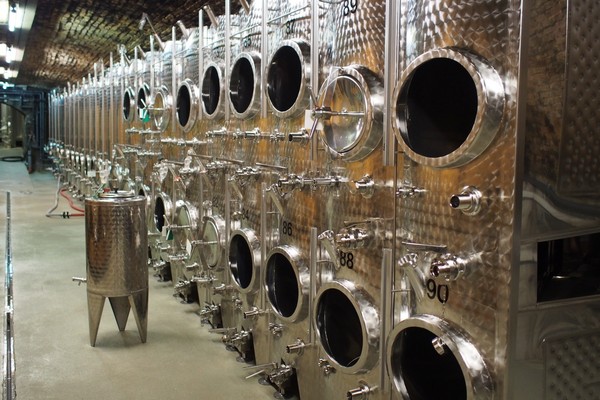
‘The
potential of German wine is very big, in still wines and sparkling
wines, and the potential of Riesling is enormous,’ says Mathieu.
‘Riesling is more current that Chardonnay now, and the potential of
Riesling is huge, with the acidity and the fruit, and the different
types of soils – sandstone, basalt and chalk.
Mathieu has already been here three years, but it is still early
days in the sparkling wine project. ‘To make a big sparkling you
need a minimum of 10 years, so you have to invest a lot of money. I
don’t know a lot of people who want to do this. You cannot make a
sparkling in 2 years, you need 10 years.’ He says that lots of
people make ordinary Sekt, but few make serious Sekt. The long-term
nature of the von Buhl project was one of the factors that
encouraged him to make the shift from France to Germany.
Until
the estate sparklings from biodynamically-grown grapes are ready
(this is the 10 year project), he has made what he calls ‘normal’
sparkling wines, and these have already won awards. Current
production of Sekt today is 200 000 bottles.
Most Sekt, he points out, is made from normal still wine
base, which is then turned into Sekt. ‘It’s a normal wine with
normal pressing and normal bitterness. I choose the grapes and I use
only the cuvee and so I have the acid and the fruit and not the
bitterness.’
‘The
big difference is the time of harvest, the pressing and the
sulphites. I have I think 5-6 ppm, which is 10 times less than the
others. Here I put 10 ppm with the dosage - at Bollinger it was
zero. People say “wait 6 months and Kauffmann will make bad things,
because you can’t make sparkling without sulphite.”’
He
also picks early: 10 days before the main harvest. ‘I pick the
grapes with maximum 11 potential alcohol. Sparkling has to have
acidity and freshness.’ Yields matter: ‘dropping crop from 5000 to
3000 kg/hectare makes a world of difference,’ he says.
Interestingly, while in Alsace Mathieu could buy good base
wines, this isn’t possible in Germany because there are none
available.
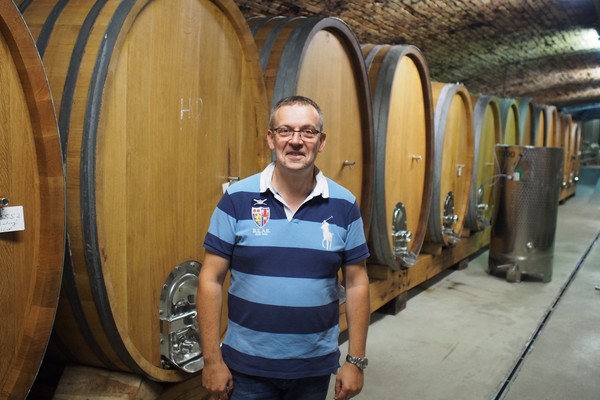
He’s
another believer in sparkling wines from Riesling. ‘A lot of people
said to me: you cannot do a good sparkling wine with Riesling. Some
Riesling has the petrol tone and it is not easy to drink in
sparkling wine. I think it is like the bad tone in Pinot Meunier. If
the wine is pressed badly, the wine ages very fast. Pinot Meunier
can do this in Champagne. I said, let me make a test. The first
Riesling I made, after two or three years it has no petrol, it is
all about the fruit. In my Riesling, it is not the full set of
Riesling aromas because of the ripeness and the pressing. Some
aromas from the skin of the Riesling grape I cannot extract because
of my light pressing. It is not a big Riesling typicity.’
Mathieu says it is hard not being able to show his best wines for a
number of years. ‘It is crazy to wait several years without selling
any bottles. I want to prove that the potential for German sparkling
wine is big. I cannot do it twice in my life.’
Goode
Notes
Reichsrat von Buhl Brut Réserve NV Pfalz, Germany
2013 and 2014 blend, bottled in 2015. 80% Pinot Blanc, 20%
Chadonnay. Half of each vintage. 80% stainless steel, 20% wood. 5
g/l dosage. Fruity and intense after 12 months on the lees. Bright
and fruity with some creamy hints and attractive citrus fruit.
Pretty with some pear and grapefruit. Linear and focused with really
pretty fruit. Not massively complex but delicious. 90/100
Reichstrat Von Buhl Riesling Brut 2014 Pfalz, Germany
Very pithy, lively ad intense. Lovely pure citrussy fruit with a
bit of pithiness and hints of ripe apple. Deliciously focused with
nice clean, linear fruit. Has really nice acidity and purity. Has a
hint of ripe apple and apricot on the finish. Lovely stuff. 91/100
Reichsrat Von Buhl Rosé Brut 2014 Pflaz, Germany
100% Pinot Noir. It is only skin contact, it’s direct pressing.
Destem grapes into press, wait a few hours and then press. 100% skin
contact. Vivid red/orange colour. Lovely direct cherry and citrus
fruit here. Very fresh and fine with a bit of grip. Lovely purity of
fruit: raspberries and red currants with lively lemony acidity.
Needs a bit of time to settle down. Lovely. 90/100
Ring
Notes
Reichsrat
von Buhl Brut Réserve NV Pfalz, Germany
A blend of 80% Pinot
Blanc and 20% Chardonnay
from 2013 and 2014, this spent 12 months on the lees and was blended
2015, before a release of 2018. 20% of this wine was in wood, with
the remainder in stainless steel. Bright lemon, crisp green apple,
with lovely drive and brisk, refreshing pithy acidity on the finish.
Quenching. 5 g/l dosage. 90/100
Reichstrat Von Buhl Riesling Brut 2014 Pfalz, Germany
This structured and proper fizz brings light dough, nuts and fine
yeast to a creamy palate, one that drives with lemon, green apple
and fine, firm acidity to the finish. Light apricot and a dusting of
chalk and fine salts lends texture. The 2014 was picked very early,
so a splash of the later harvested 2013 was blended in to complement
and balance the vibrant riff of acidity. 92/100
Reichsrat
Von Buhl Rosé Brut 2014 Pflaz, Germany
Deeper, bright pink hue, this 100% pinot noir is from the 2014
vintage. Skin contact for a few hours, and then direct press into
stainless. Beauty freshness and purity. Brisk, fresh and bright,
with fine wild strawberry, subtle cherry, white grapefruit pith
acidity and subtle raspberry blossoms on the finish. Pristine.
91/100
EXPLORING SEKT
Wines
tasted 09/16
Find these wines with wine-searcher.com
Back
to top
|

